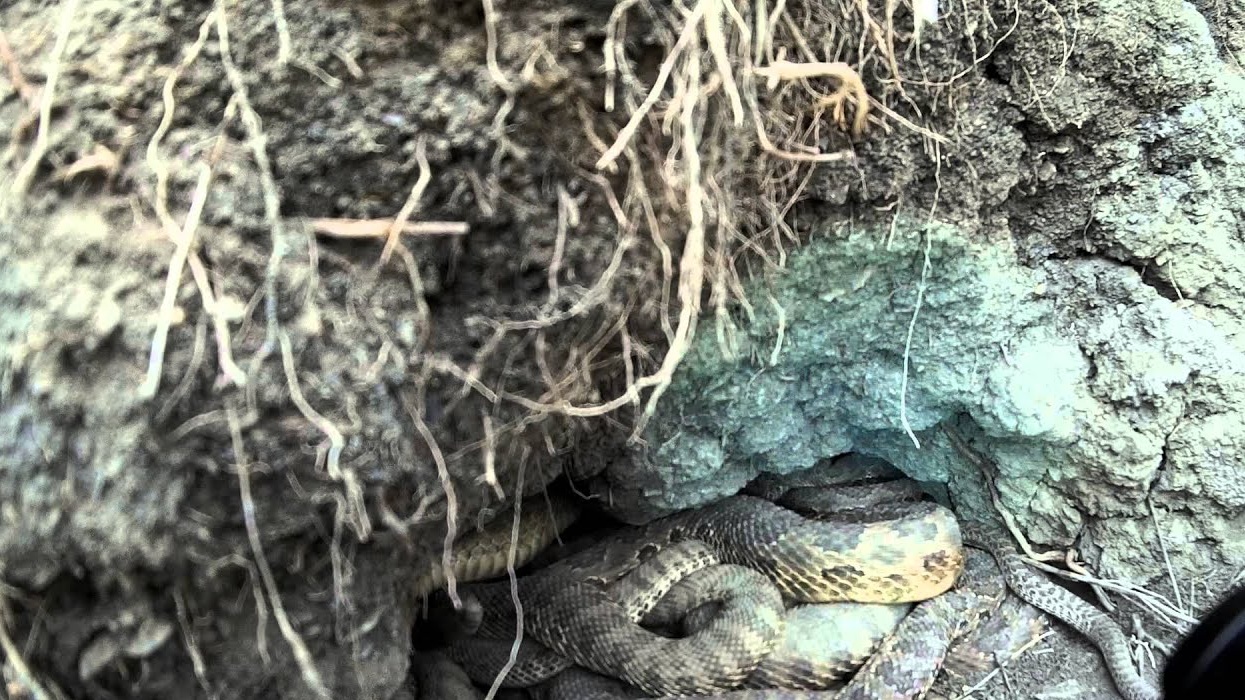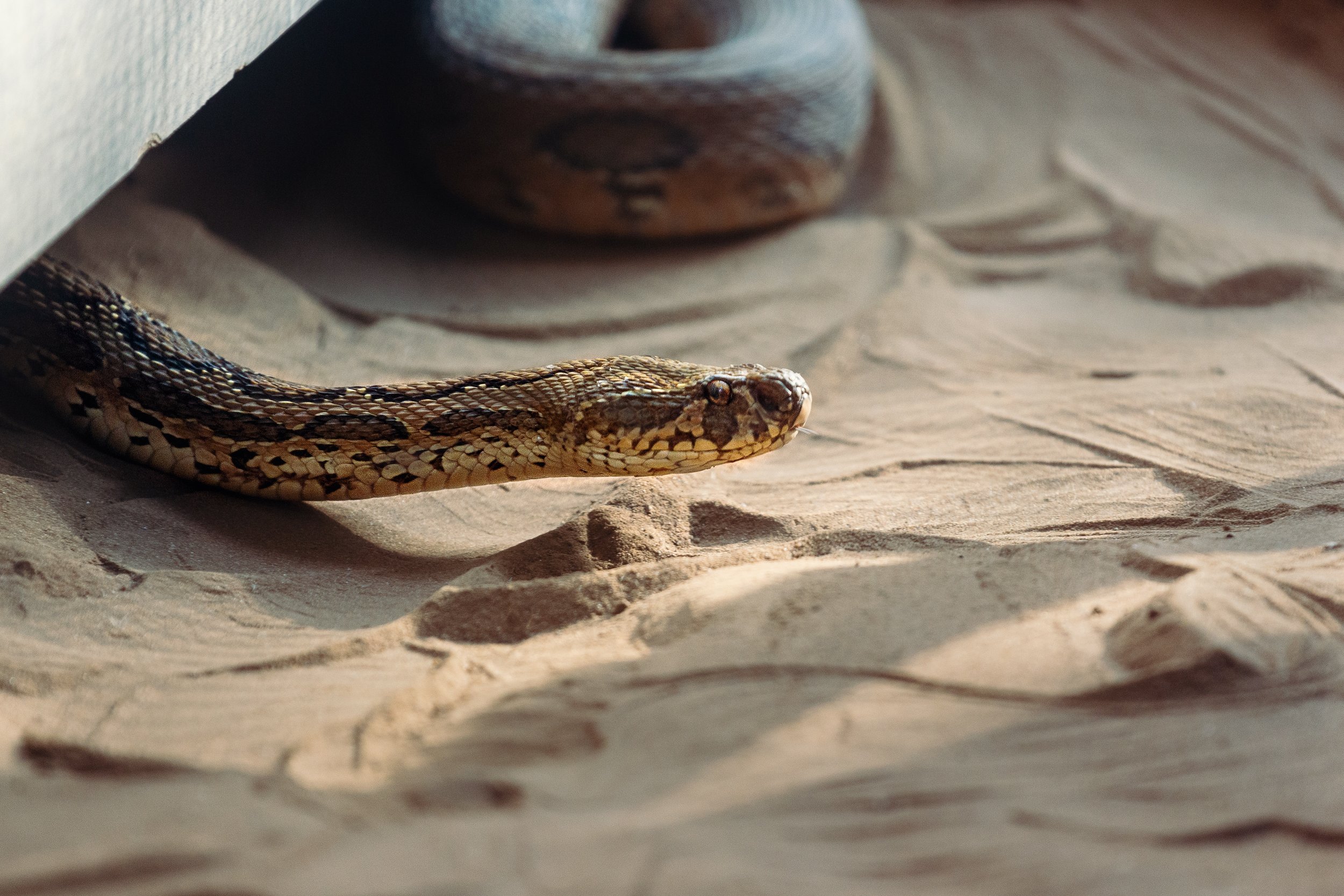When is Snake Season? A Complete Guide to Predicting Snake Sightings
The days are getting longer and the weather is getting warmer. Spring is here, which means that those inaccessible trails have thawed and our favorite bike loop is drying out.
As we revisit our favorite paths, rustling leaves or a stick lying across the trail remind us that we share the outdoors with snakes. But when exactly do we have to start worrying about them? When is snake season?
The rule of thumb in North America is that snakes are most active from April to October and hibernate during the cold months outside of that range.
But there are exceptions to “snake season”. And they are becoming increasingly more prevalent.
So rather than give you the rule and its exceptions, this guide explains why snakes are usually out during snake season, so that you can make your own decisions before hitting the trail.
Body Heat
It really just comes down to this.
Snakes are “cold-blooded” animals and are usually sighted basking in the sun. But the term “cold-blooded” is a bit misleading and for that reason is also a bit outdated.
You may think that being “cold-blooded” means that snakes are naturally cold and use the sun’s heat to warm themselves up. That notion is only partially right.
To really understand a snake’s body heat situation we should take a step back and define some vocabulary.
HOMEOTHERMIC vs POIKILOTHERMIC
Humans are homeotherms (homeo = same, therm = temperature), which means our body temperature stays the same regardless of the outside temperature.
Snakes, and all “cold-blooded” animals are poikilothermic (poikilo = irregular, therm = temperature). A poikilothermic animal’s body temperature changes with the outside temperature. If the weather is hot, its body temperature will become hot. If the weather is cold, its body temperature will become cold.
But just because a snake can survive at different body temperatures doesn’t mean that it can function the same at all temperatures. There are some bodily functions for which a snake needs warmth and some for which it needs cool.
And that brings us to our next piece of vocabulary.
ECTOTHERMIC vs ENDOTHERMIC
Humans are endothermic (endo = inside), which means that our body temperature is regulated from within our body. Most of our body heat comes from our metabolism. Snakes, as with other reptiles, are ectothermic (ecto = outside), which means that their body heat is mostly produced from outside their bodies.
So humans are homeothermic endotherms and snakes are poikilothermic ectotherms. Clear as mud, right? Here are some examples of other animal types, for the science nerds out there (Chipmunks: The Poikilothermic Endotherm).
The takeaway here is that snakes need to use outside sources to regulate their body temperature. Their quest to do that is the main driver behind snake season.
Best Temperatures for Snakes
In order to move and eat, snakes rely on chemical reactions in their muscles. At cold temperatures, these reactions are slow and at warm temperatures they are fast.
These chemical reactions are optimal at body temperatures are between 70 - 90 degrees Farenheit. Below 60 degrees Farenheit, snakes become sluggish. Above 95 degrees F, snakes become overheated.
Fall/Winter
As the warm autumn months come to and end and the average daytime temperature approaches a snake’s lower limit, its body temperature will decrease making it sluggish. It is less likely to find prey and more likely to become prey. To protect itself, the snake will “den up” underground, either alone or with others, until spring.
In cold, snowy climes, the snake will enter the deep sleep of hibernation.
In warmer climes, the snake won’t hibernate but will instead brumate. During brumation, a snake’s body acclimates to colder weather, its metabolism slows, and it becomes less inclined to feed.
On an unseasonably warm day, a brumating snake can sometimes come out of its den to find easily-captured prey. Nice sunny days that follow a long cold streak are when people are most often surprised by snakes.
Whether hibernating or brumating, the cooler body temperature and reduced activity is necessary for the snake to produce sperm in time for the spring breeding season.
Spring
As the average daytime temperature pushes back up above 60 degrees Farenheit, snakes will exit hibernation or brumation and seek out warm, sunny spots to increase their body heat.
Most activity occurs during mid-day when the temperatures are closest to ideal. If the sun is not strong enough, they will be found well-exposed near other sources of warmth.
With the increase in body heat comes an increase in activity. This is mating season. Most young are born in the summer or early fall.
Summer
When the average daytime temperatures are around 80 degrees Farenheit, snakes limit their activity to the early morning and late evenings, typically dawn and dusk. This allows them to soak up heat before and after a cold night and avoid the scorching mid-day heat.
A basking snake will lie perpendicular to the sun and expand its rib cage to maximize the amount of sunlight falling on its body. It can also darken its skin to absorb more heat.
Temperatures above 90 degrees Farenheit will cause an snake to overheat and could result in a fever that it can’t control. Exposure to temperatures above 95 degrees Farenheit can kill a snake in minutes.
An overheated snake will lie parallel to the sun, lighten its skin, coil into a shady area, or occupy underground burrows belonging to other animals. Humans are most likely to inadvertently encounter a snake in one of these positions. See this article for 5 Ways to Avoid Snakes.
When the weather is persistently hot, snakes will come out at night, when the temperature is lowest.
Heavy rains following a heat wave are another time humans are more likely to encounter a snake. Snakes that have burrowed themselves underground will search for dry areas after being forced out from flood waters.
Conclusion
It’s still a good idea to be on alert for snakes from April to October. But depending on where you live, there may be times where a little more caution is deserved.
Average daytime temperatures are the main driver behind snake appearances. Warm weather may show snakes in the mid-day sun. Hot weather may show them in the twilight hours. Heat waves may push them into making night runs.
In addition to those generalities, be aware of geographical differences, which can cause different snake behaviors. Snakes in cold climes will tend to hibernate in winter whereas those in warm areas will tend to brumate.
So you’re probably safe come winter in Boston, but should stay on the lookout in San Diego.
And finally, overarching weather patterns, like El Nino, as well as changes in climate due to global warming can cause unseasonably warm or rainy events. So be aware of the daily temperature and precipitation before heading out onto the trail.
Knowledge is power, but if you’re looking for some additional peace of mind on your next outdoor excursion, check out our Snake Sox, the snake-proof wraps built for adventure!




